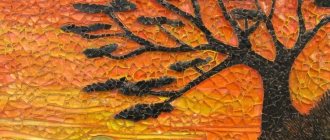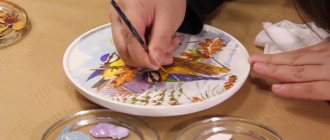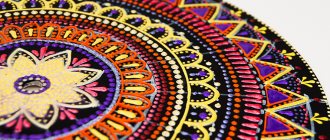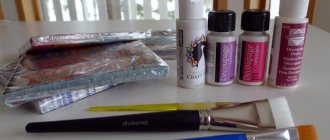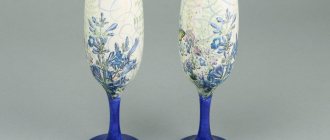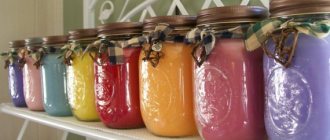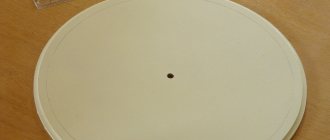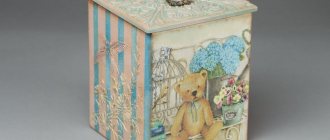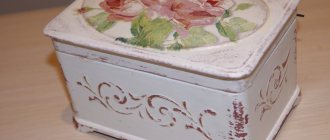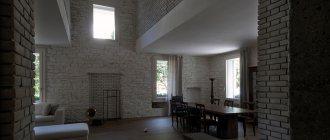The main stages of creating a masterpiece from a plate
Decoupage of plates is not a complicated process at all and will not take much time and effort.
Decoupage is a special form of needlework with which you can decorate your kitchen with your own hands.
The first and most important step in the work is the complete cleansing of the working base. It needs to be washed, dried and degreased very carefully. If these conditions are not met, the end result may not please you and will forever discourage you from studying this technique further.
Next, we choose from the available napkins those that we like best. You can also combine several sections of different napkins to achieve one overall design. After the choice is made, you only need to separate the top layer of the napkin.
Openwork napkins for decoupage
If you have chosen several patterns, then you should figure out in advance where each one will be located directly on the base. Place them on a plate and see how the composition looks. If the base will be decorated with one napkin, then you need to attach it to the plate and mark where the hanging areas will be. They need to be cut with scissors in advance.
Napkins for decoupage can be the most unusual
Next, acrylic glue is applied to the laid out decorative elements and carefully distributed over the surface using a brush. You can also use a brush to smooth out any unevenness that may have arisen when laying out the drawings. You need to make sure that there are no air bubbles or folds under the napkins. After the glue is evenly applied to the entire plane, you can leave the product to dry.
The main thing in decoupage is accuracy
The last step is coating with acrylic varnish and the decoupage of the plate is completed.
Decoupage of plates can be mastered by every craft lover
Decoupage is a fascinating form of creativity
Decoupage of plates is a great way to make original decorative items with your own hands
After this simple technique has been mastered, you can turn to reverse decoupage and the use of additional decorative elements: photos, creating a scuffed or craquelure effect.
What is plate decoupage?
Decoupage is a technique for decorating dishes by gluing part of a picture to it with a final coating of varnish so that it is well fixed, and literally “decoupage” translated from French means the word “cut”. The founders of decoupage were German artisans of the late fifteenth century, who began decorating simple furniture with similar pictures.
In the seventeenth century, Europe was swept by a wave of hobbies with various motives, and therefore all countries became interested in homemade decoupage, so after some time, it became widespread; but this technique came to Russia only at the beginning of the 21st century, and has gained great popularity only in our time. Using this technique, you can decorate the surface of both disposable plates and plastic bottles and various ceramic dishes. An old wooden tabletop can also become beautiful and decorative if you apply decoupage to it. And decoupage plates can even look like works of art - I was convinced when I came across amazing works by Polish craftswomen on one of the sites, where everything from an Easter egg to a New Year's tree ball looked simply masterpiece!
The easiest thing for newbies will be decoupage of glass plates, then in the same style you can start decorating furniture, handbags and other things - the main thing is to find a good mk. The theme can be different: New Year's landscape, flowers, still lifes, even details of traditional paintings. Or, why not, old photos of your favorite uncle. The main thing is that you create this product with your own hands.
Popular articles How to save electricity: 50% savings on any meter
What we need for the master class:
- Dishes.
- Napkins - these can be high-quality napkins for decoupage or simple products with any pattern.
- Picture or any photo.
- Glue for acrylic.
- Sharp scissors.
- Alcohol.
- Craquelure.
- Eggshell.
- Nice brushes.
- Varnish.
- Primer.
- Acrylic paint of any color.
- Oil-based gold or other paint.
The entire list will not be needed for the master class. You need to take all the tools, but you can take just one thing from napkins, photos, craquelure or eggshells.
Decoupage plates are divided into the following types:
- With napkins. If special napkins are used, which are needed specifically for decoupage, then they need to be layered, removing the top part; if simple analogues are used, we do not separate them into layers, but glue them as they are.
- With craquelure. We paint the plate with paint of the desired composition, which will crack textured when dry.
- Eggshell. Glue fragments of eggshells onto the drawing, photo or the area around them as a frame.
- Photo design. The style and technique are the same as when using napkins, we just use printed photos as an image.
In addition, decoupage plates are divided into the following types:
- straight - we put a drawing or photograph on the front of our dishes.
- reverse decoupage - we apply the design to the reverse side. Most often, they are used on transparent saucers.
Plastic plates
This option requires special skill. Therefore, follow the step-by-step instructions for beginners to make interesting products. Involve your children in the process, it will be a pleasant and exciting event for them.
For this master class you need to take disposable white plates. You will also find it useful:
- paper napkins. The best option is to choose plain napkins;
- take brushes of different fibers and PVA glue;
- you will also need tape, scissors and a simple pencil.
Use foil, ribbons, beads, and other additional accessories as decorations.
Note! The preparatory stage is of great importance. It is important to degrease the plates before starting work. This procedure is necessary for the glue to lay down in an even layer. Due to the harmful composition, this process is best left to adults.
- Decoupage cutting board: master class and technique for beginners
Rice paper for decoupage: decorative techniques, methods of working with the material and a master class on use for beginners
DIY decoupage - ideas and step-by-step instructions for updating the appearance of old things for beginners
Acrylic paint drawings are often used as decoration. It looks cute and gentle. When the work is completed, you need to turn the plate over, attach double-sided tape and a loop on it to the back. This way you will hang the product in the room.
Today there are many ways to decorate dishes and furniture. You just have to show a little imagination and take the advice of the experts.
Tips for working with decoupage technique
Having mastered the first steps in the art of decoupage, you can apply additional techniques for decorating objects.
The use of craquelure varnish allows you to create an aging effect. To do this, it is necessary to apply a layer of the product to the surface on which a primer or a layer of paint has previously been applied. After 20-30 minutes, apply a layer of contrasting paint and set aside until completely dry. After some time, cracks will begin to form on the surface, which must be varnished.
A mosaic made from eggshells, which must first be dried and crushed into small pieces, looks no less original. It is necessary to apply it on a thick layer of PVA glue, then dry thoroughly. If desired, the design can be applied to the mosaic itself, or you can apply pastel colors of acrylic paint and varnish.
The design of the plate can be supplemented with pieces of textured fabrics, beads, shells and other unusual items, which will give the product a special sophistication. The main thing is to observe moderation in everything and not to overdo it with decorative elements. After all, if a handmade item is made with taste and soul, it will delight not only you, but also your loved ones, who will certainly enjoy an unusual gift given for a family holiday.
Master class on decoupage on bottles
Decoupage with photographs on glass is not so difficult; we can offer you another master class on decoupage on glass bottles. Decoupage bottles using napkins is much easier than using regular photography, but it’s also quite possible.
To make decoupage on a bottle, prepare the following materials for work:
- actually, the bottle itself;
- PVA glue;
- flat brushes;
- sponge;
- acrylic paint and varnish;
- photo.
Necessary materials for decoupage
1. Find in your photo album or find and print an image from the Internet on photo paper. The photograph will serve as the main element in the decor. Degrease the base, this can be done with alcohol. Then choose the color of the acrylic paint (it is best to choose the shade that predominates in the selected image, so that the photo looks like one with the color of the base). Using a sponge, cover the bottle with your chosen paint. Let it dry.
Related article: Secrets of beautiful decoupage - decorating a desk (master class!)
Paint the bottle with paint
2. The next stage will be working with photography. Cut out the image and place it in water for 7-10 minutes to soften the paper a little. After taking out the photo, carefully remove the bottom paper layer. The picture should become much thinner, now it can be easily placed on the base. To attach a photograph to a glass bottle coated with acrylic paint, use decoupage glue or PVA glue diluted with water.
Cut out the picture
Glue the picture to the bottle
3. Using the sponge you used to apply the paint, work the edges of the image with a drop of paint, combining the photo with the main color of the bottle. After the product has completely dried, cover it with a layer of varnish, thanks to which the bottle will not be afraid of water.
Coat the bottle with varnish
4. You can decorate the product with rhinestones, beads or seed beads, sparkles, or tie a ribbon around the neck. In this case, the picture is decorated with glitter varnish.
The finishing touch - decorate the bottle
Decoupage plates are divided into types:
With napkins. If special napkins are used, intended specifically for decoupage, then they are layered, separating the upper part; if ordinary analogues are used, they are not separated into layers, but glued as is. The execution technique can be found in Fokhtina’s photo and video lessons at the end of the article. With craquelure. The plate is painted with a paint of a special composition, which cracks textured when dry. Eggshell. Pieces of eggshell are glued onto the drawing, photograph or the area around them as a frame. Photo design. The style and technique is the same as when using napkins, just using a printed photograph as the image.
By combining different techniques, you can create something original.
Decoupage and golden acrylic paint
For decoration, you can also use printed photos or simply portrait images.
Owls cut from decoupage sheets
In addition to this method, decoupage plates are divided into:
- direct - an image or photo is superimposed on the front of the dish;
- reverse decoupage of a plate - the design is applied to the reverse side. Typically used on transparent saucers.
One of the most popular motifs is romantic, most often combined with aging
There is nothing complicated in the decoupage technique, you need to do everything carefully and follow the correct sequence
Popular articles Carrots - recipes
Master class on decoupage plates with photographs
A plate decorated using the decoupage technique using photographs can serve as a cozy, family souvenir, a wonderful decoration for the kitchen or dining room, or an element of homely warmth in a sideboard or buffet, if made from a joint family photo.
In order to decoupage a plate, you will need:
- transparent plate;
- photos;
- glue and brushes;
- acrylic varnish.
You will also need scissors, some cotton wool or gauze, alcohol for processing and other magazine clippings, three-layer napkins for decorating the main photographs. Before you start, think about how you would like to arrange the images on the plate, for example, which photo should be in the center, what shape and size.
1. Prepare the plate for decoration. Taking a little cotton wool, wipe the surface well, making sure that there is no cotton wool or gauze left on the plate. The surface of the plate should be perfectly transparent. Estimate the size of the photo or picture and only then cut it.
2. You need to start posting photos with those that should be in the foreground. Armed with a brush and decoupage glue, coat the photographs evenly on all sides. We have to work with the plate from the bottom side, so turn it down, coat with glue the place where the photo will be located.
Related article: Making stencils for a children's room (+40 photos)
3. Having placed the photo with its front side on the glass of the plate, coat it with glue again, dispersing the bubbles under the paper. In this way, place new elements on the plate according to your plan. Be careful to remove air bubbles from under the images. For convenience, you can use a sponge.
Try not to leave gaps on the plate unless you plan to secure all the images with acrylic paint or a huge sheet of paper. The decoupage of the plate should be tight.
4. Having placed all the images, coat the entire back side of the plate well with glue, then leave to dry. After the plate has dried, you need to process the edges, removing any protruding pieces of paper. This can be done with scissors or a nail file (the latter will definitely remove all the uneven edges). Cover the finished plate with a couple of layers of acrylic varnish.
The finished decoration can be placed on the wall, leaned against or placed in a prominent place. You can create a whole series of decoupage plates from photos of your family - a great decoration for your home.
Please note that the plate cannot be washed under water, so use alcohol to care for the product.
On video: master class on decoupage plates with photos
Which plate should you choose?
Among the large selection of different types of plates, you can take any to your taste, but not every dish is suitable for decoupage. Many saucers are produced with corrugated or pimpled texture, and many of them even have their own image, similar in style to the one we want to create ourselves. In addition, all plates differ in the materials they are made of - it can be simple ceramics, high-quality glass, or even porcelain. For work we will need the most ordinary porcelain plate, smooth and without any patterns.
Direct decoupage technique with image application, master class
Using scissors, cut out a design from a napkin. If we take a photograph, then by analogy we take its main part. These can be different topics; on the eve of the holidays, New Year's stories are very popular, but there is still time to prepare for this holiday. And this can also be a good present for March 8, and, of course, for the birthdays of dear people.
Gzhel painting history of the craft, how to draw picturesDrawing on stones how to draw pictures on sea pebbles, master class for beginnersSpot painting of bottles: master classAcrylic paints for fabric, what you can paint with acrylic on T-shirts, jeans, jackets with your own hands, ideas
The plate itself must be degreased; to do this, moisten a cotton wool disc with alcohol and wipe all surfaces - front and back.
After degreasing the products, wipe everything well, otherwise wrinkles or bubbles may appear on it during the process of applying the design.
We slowly place the image, photographs or cut-out parts on the front of the plate.
Cover the correctly arranged particles with glue and smooth out all the details with a brush.
After all the steps, when the glue has dried, we coat the entire surface of the product with the pattern with varnish.
We are waiting for the varnish to dry completely - and the plate is ready, our master class is over.
This decorating method is used to create cute plates. If you want to not only admire them, but also serve them with various fruits and sweets for tea, then it is better to use reverse decoupage and decorate them correctly.
DIY reverse decoupage technique, master class
Cutting out the image and degreasing is identical to the direct professional method.
The only difference is that the image is attached to the back of the dish, and the plate itself must be completely transparent, otherwise the work will be poorly visible and completely lose its meaning.
There is also a difference in the method of applying our glue. We do not coat the entire image with it, but only the edges, and it is better not to go onto the front surface of the plate, but minor flaws are allowed, the main thing is not to smear too much glue. You can study this technique in more detail using photo and video materials on the Internet.
After the glue has completely dried, all the “blunders” can be slowly and carefully cleaned up.
If you want to create an opaque background around the image, then paint this surface with acrylic paints and let the product dry. So we have finished our master class.
How to make reverse decoupage on glass
In this master class I will show you what reverse decoupage on glass is, how to make an inscription on the back of a plate and how to get a very interesting background using a bag.
For this lesson we will need: white, purple and gold acrylic paints, a gold and glitter glass outline, a regular cellophane bag, diluted PVA glue, a napkin (or any cutout) with a floral motif, a pen and a piece of paper.
Take a glass plate and glass cleaning liquid.
And degrease the plate from the outside.
All! We don’t touch it with our hands on this side, but if you get tired, grab it, wipe it right away, otherwise your imprint will remain on this plate forever :)
On this plate I decided to make a wide purple border with a very beautiful background. In order to draw an even circle, I placed a smaller plate on top of our plate
I found the middle approximately by eye so that it would not be displaced and secured it in some places with masking tape. For anyone who doesn’t have a good eye, I advise you to use measuring instruments :)
And she outlined a small plate with dots on the glass with a golden outline.
Let's wait 5 minutes for the outline to dry, and carefully remove the small plate from the large one.
This is what happened.
Now we glue fumlent along these points, it’s something like electrical tape, only it has a less sticky second side, ideal for glass and varnished surfaces. The convenience is that it stretches and bends as you need. That is, where the tape needs to be pinched or folded, the tape will stretch and lie flat.
That's how it happened.
We need to make an inscription in a circle “Happy Easter.”
To do this, we take paper, preferably thinner, but in general this does not play a special role, and a pen or pencil. We apply paper to the plate, outline the arc along which we need to write, and write along the drawn line, the intended phrase and cut out the paper.
This is how it worked out for me.
Now we turn the pieces of paper over and circle the inscription on the back side. If your paper is thick, it will be more convenient to do this on illuminated glass (or just on a window during the day).
This is our ready-made copybook. Place it under the plate.
And we begin to circle. Since our decoupage is reverse, we do everything in reverse order.
First we will apply the outline with glitter.
And after it dries, apply the main gold outline on top.
And along the edge of the plate, I also made a simple pattern with just a gold outline; it could be dots, squiggles, anything. But with a defined edge, the plate always looks better, neater, more complete.
Well, we have finished the preparatory work. Now let's get to the very interesting part, the border background! We take purple paint and apply it by padding to the border limited by the fulenta.
While the paint is not dry, crumple the bag and hold it in your hand, like this.
And we begin to apply the bag to the plate, quickly but carefully, without moving or smearing the paint, but simply tearing it out along the folds of the bag. It should look something like this.
You will be able to regulate the degree of paint residue yourself, leave it denser or make it even more flexible :) Don’t forget to either wipe the bag, or rumple it, or simply replace it with a new one. After all, at some point the package takes on paint and ceases to perform its functions.
We make a second layer, contrasting with the first, but in the same tone. We take white paint and add a little of the same purple paint to it, we get a light purple. And also apply it with a swab on top of the first layer.
In general, we can stop here, but I decided to cover this layer with a bag.
And make the third gold 
That's how it happened.
And closer so that everything is clear :)
Of course, there can be a myriad of these layers, experiment! An indescribably interesting result can result. 
Add a couple more layers of gold for opacity. Waiting for it to dry. And we remove the fumlenta. Since enough paint got on it so that when removing this paint would not be pulled behind it, I recommend trimming the paint with a stationery knife.
Now you can remove it.
And we go through the edge of the border with dots with a golden outline.
Next, take a napkin, I took my favorite one, with snowdrops. the last one (oh, I won’t be going to Voronezh any time soon, where they are given as gifts, wonderful Voronezh decoupage girls:)
We cut out the motif very carefully along the contour and separate the very top layer.
We find a place for her. Attached.
And glue it using diluted PVA glue and your fingers.
We try not to spill too much glue on the plate; we glue it carefully. We blot the excess with a damp cloth, and at the same time smooth out any wrinkles if there are any.
Don’t be alarmed by traces of glue on clean glass, there will still be traces of glue next to the motif, we’re not magicians :) Then we’ll calmly wash them off. Let's wait until it dries. To speed it up, you can dry it with a hairdryer.
This is what we got. As you can see, traces of glue are very obvious :)
We did not cut out the light yellow background between the greenery of the flowers. I didn't do this on purpose. I’m lazy by nature, and I’ll fix this mistake faster than I would have to worry about cutting it out :)
Apply green paint and try to guess the color from the color that is close to the color of the greenery itself. And carefully, without stepping anywhere, we paint over this unnecessary yellow background.
This is what I got, and yet I stepped in, you can see it, and the color should have been made lighter, but it seems to me that I didn’t really disfigure it. In general, be careful :)
After the paint has dried, coat the napkin with varnish. I coated it with regular acrylic water-based varnish. It is odorless. brushes are washed with water. And most importantly, it dries very quickly! 
We also cover it carefully, without interfering with the edges of the motif. Let me explain why this step is needed. Many napkins have a loose structure and when gluing, very, very small holes are formed, and if you immediately cover the napkin with white paint, the paint will pour into these small holes, and the whole motif will be a tiny white dot. To prevent this from happening, we will fill these holes with varnish, and nothing will flow in there.
After the varnish has dried, we make the motif opaque and rich in color. We cover it on the reverse side with white paint. For these purposes I use white acrylic primer. But for me it is very opaque.
Naturally, under no circumstances should we step over the edge; if we do, immediately remove it with a damp cloth and wipe clean.
Now, after drying, our picture is reliably protected from being washed off, and we can wash the plate from all unwanted stains. I wash with a sponge with “Fairy” around the motif. I try not to touch the napkin itself too much.
Here's a clean plate.
Wipe it off carefully.
And lastly, draw a cross and write “Christ is Risen.” Since I have a personalized plate, I will also add a name on top. I drew a cross on a checkered piece of paper, cut it out, and put it on a plate in the place where it will be drawn.
We trace the cross along the contour, with dots (it’s smoother this way). We wait for it to dry and remove it.
We make a piece of paper with an inscription using the same technology. We write:
We turn the sheet over and circle the inscription on the reverse side.
We place this side under the plate and outline it, first with an outline with glitter.
And immediately fill in the cross with the glitter outline.
We wait until it dries and outline it with a gold outline on top.
And we cover the cross with gold paint.
We clean all the mistakes from the transparent glass, carefully degrease it again and varnish it. So our wonderful plate is ready. And for those who love purple, like me, it's simply gorgeous 
Since all the paint is on the back side and is well covered with varnish, this plate can and should even be used as a plate for Easter cakes. My sister will definitely go to church with this Easter cake.
Decoupage of plastic plates: 9 necessary tools
It requires special skill and knowledge of a special technique to apply decoupage to plastic plates. Disposable plates are usually used in teaching decoupage techniques to children aged 3 and older; the main thing is to arouse children’s interest in this work. To do this, a master class is held with a step-by-step demonstration of movements in the style of a magician - one or two, and you're done. Children are fascinated by the process, they become interested, and they get involved in the work with pleasure, begin to do the same as adults do, urging them on with questions: “What’s next, what’s next”….
Thanks to the decoupage technique, you can make an original gift from a simple plastic plate.
All you need:
- Disposable plates;
- There are two types of paper napkins - plain and matching with patterns;
- PVA glue;
- Brushes with different bristles quality;
- Simple pencil;
- Scissors;
- Scotch;
- Double-sided adhesive tape;
- Decorative elements as desired - sequins, foil, ribbons, beads, seed beads.
Popular articles How to make a motanka doll yourself
The goal of the children's master class is to teach step by step how to make direct decoupage using accessible means, to attract children to creativity, and to develop creative thinking. Parents can also work with their children, giving them the impetus to develop an excellent hobby for the whole family.
The edges and design can be decorated with sequins, beads, and snowflakes. Adults can decorate the edges by painting with acrylic paints on dried glue or paper. This will give the work prettiness and tenderness. On the back side, don’t forget to glue a narrow loop of ribbon onto double-sided tape so that the plate can be hung on the wall.
Debut master class
You should start your acquaintance with decoupage with the usual lessons on transferring a pattern from a napkin to a flat surface. Basic knowledge will help you get acquainted with the technique, after conquering which you can move on to getting acquainted with 3-D pictures.
To get acquainted with the technique, a lesson on decorating a bottle is perfect. Later, the craft can be used as a flower vase or for other practical purposes.
To decorate the bottle you will need:
- Glass bottle or jar with a smooth surface. You can use round and square containers.
- Several paper napkins with the same pattern, on which the outline is clearly visible.
- Glue for decoupage.
- Foam sponge or sponges.
- Acrylic paint.
- Finishing varnish.
- Brushes, pencil, scissors.
- Disposable scalpel or stationery knife.
- Modeling mass for modeling.
- Modeling board.
- Thick paper or cardboard.
- Modeling tools.
Before starting work, you should prepare the bottle. The contents of the container, as well as its surface, are thoroughly washed. The dried bottle is primed with white acrylic paint. The soil layer should be quite thick. You can apply several layers of paint.
When the primer has dried, sand the surface with fine-grained sandpaper. The background of the picture is filled with neutral pictures. To do this, use paper napkins, from which you tear out the necessary elements of the picture with your fingers. Using decoupage glue, a background pattern is glued onto the bottle.
Stylish decoupage plates
The trends in modern interior fashion are to bring something unusual, new, and distinctive from the apartments of girlfriends and friends into the design of premises. This is a new side of sensations and perceptions, a new look at your own interior.
Things made with your own hands perfectly express the self of a person with skillful hands. An interesting modern option for homemade room decoration is plates processed using the decoupage technique. A new word in modern applied art came into the Russian language from French, and its literal translation means “to cut out.”
Even the cheapest plate is suitable for using the decoupage technique.
What is decoupage:
- Cutting out;
- Bonding;
- Drawing missing details or patterns;
- Design of the edge, edging of the plate;
- Processing the back side with gluing a secure loop;
- Varnish coating in several layers.
It is these processes that make up the decoupage technique. Its basis is gluing fragments of a picture, creating a single composition by drawing, followed by a final coating with varnish so that the surface layer of the work is as durable as possible.
Different decoupage techniques allow you to use plates of various qualities, and the resulting products are akin to works of art. And if you take a set of transparent plates and use the reverse technique, then you can also eat from such dishes, on holidays, of course.
New Year's decoupage of plates: 7 ways
What could be more interesting than preparing New Year's gifts for family and friends. This period is exciting in itself with the anticipation of the holiday, and the crafts are full of emotions and joy.
Popular techniques:
- Decorating porcelain plates with photographs;
- Decorating a decanter using decoupage cards;
- Decoupage with napkins of ceramic and metal utensils;
- Decoupage with craquelure;
- Reverse decoupage used on glassware;
- Decorating plates with eggshells;
- Decorating wooden plates with printed pictures.
A plate decorated using the decoupage technique in a New Year's style will give the room a festive atmosphere
There are many options for decorating in the decoupage style; each hand maker can use his own materials, but use already proven techniques.
But on New Year's days, the most interesting thematic pictures are used, decoration with rhinestones and beads is added to make the plates more festive, bringing joy and aesthetic pleasure.
